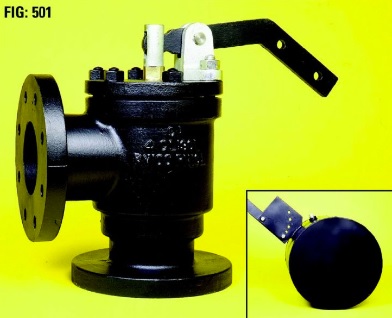Valves are used in residential and commercial buildings to regulate, control, and direct the flow of fluids in water supply systems, wastewater treatment plants, and chemical plants. These mechanical devices are used to stop water flow, prevent the backflow of liquid, and adjust the water pressure in the plumbing system. With the help of valves, plumbers isolate sections of pipelines for repairs or in case of leak sprouts. There are a variety of valves, such as ball valves, gate valves, butterfly valves, globe valves and pressure-reducing valves. Each of which has its own specific functions, features and styles designed to meet particular plumbing needs. Let's take a look at globe valve and float valve and their applications.
What is the working of Globe Valves?
Globe valves are plumbing valves that allow precise control of flow of fluids by opening and closing pipes. These valves have a stopper inside the valve, which controls the fluid flow when raised and lowered with a circular knob at the top. These valves have effective modulating and throttling capacities, and they are easy to maintain. There are three types of Globe valves, namely:
- Z types
- Y types
- Angle types
What are the applications of Globe Valves?
A Globe valve is used in high-point vents and low-point drains as it controls leak tightness and safety. These valves have a solid shutting mechanism having less possibility of faults and leakage, making them a perfect preference for residential and industrial locations. It is used when there is a requirement for the upstream fluid flow and wherein steady fluid glide is not necessarily required.

They are used in:
- Cooling water systems
- Fuel oil systems
- Feedwater or chemical feed systems
- Boiler and main steam vents and drains
- Turbine lube oil system and others
- Process plants, power plants, and wastewater plants
- Lubrication systems, steam lines, and coolant pipes
What is the working of Float Valves?
The float valve is also known as a ball-cock. It controls the level of liquid in a tank by opening and closing on its own. There is a float which mechanically operates the valve. The ball regulates the flow of water, and the main valve is controlled with the help of a sub-valve. The valve needs to be installed horizontally and not vertically. There are two types of float type valves: a low-side float valve and a high-side float valve.
What are the applications of Float Valves?
A float valve is used in low, medium, and high-pressure applications. They function as throttling devices, and it works on an automatic regulation to control the flow of liquid. It is economical as it does not require electric power and hence, is perfect for remote areas. They are completely mechanical in their functioning and can be used in water tanks and in cisterns, water heaters, condensate tanks, reservoirs, sprinkler services, swimming pools, cooling towers, open or closed storage tanks and industrial refrigeration systems.

No comments yet